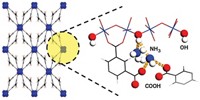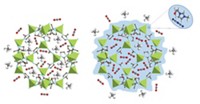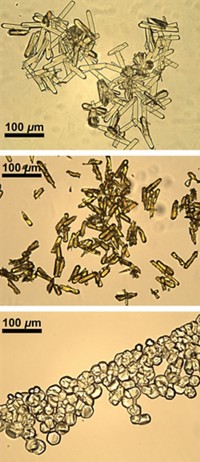Advertisement
Grab your lab coat. Let's get started
Welcome!
Welcome!
Create an account below to get 6 C&EN articles per month, receive newsletters and more - all free.
It seems this is your first time logging in online. Please enter the following information to continue.
As an ACS member you automatically get access to this site. All we need is few more details to create your reading experience.
Not you? Sign in with a different account.
Not you? Sign in with a different account.
ERROR 1
ERROR 1
ERROR 2
ERROR 2
ERROR 2
ERROR 2
ERROR 2
Password and Confirm password must match.
If you have an ACS member number, please enter it here so we can link this account to your membership. (optional)
ERROR 2
ACS values your privacy. By submitting your information, you are gaining access to C&EN and subscribing to our weekly newsletter. We use the information you provide to make your reading experience better, and we will never sell your data to third party members.
Materials
Custom Frameworks With Tailored Metal Vertices
New synthesis strategy tunes the size of metal units and yields MOF with exceptional porosity
by Mitch Jacoby
January 23, 2012
| A version of this story appeared in
Volume 90, Issue 4
Exceptionally porous metal-organic framework (MOF) compounds have been prepared by coupling large metal-biomolecule clusters with simple organic linker molecules, according to work published in Nature Communications (DOI: 10.1038/ncomms1618). The extreme porosity of MOFs compared with other porous materials along with their potential application in gas storage and separation, catalysis, and other areas has driven extensive research and some commercialization efforts. Nearly all synthetic customization of the materials to date has focused on increasing the length and tuning structural properties of the organic linkers. Jihyun An and Nathaniel L. Rosi of the University of Pittsburgh, Joseph T. Hupp and Omar K. Farha of Northwestern University, and coworkers now report success with an alternative strategy: customizing the size of the metal vertices. The team coupled large metal-biomolecule clusters, specifically zinc-adeninate groups, with simple and relatively short dicarboxylate linkers to form bio-MOF-100. The team reports that the material exhibits high surface area (4,300 m2/g) and exceptional pore volume (4.3 cm3/g), which is some 20% larger than the previous record-setting MOF.





Join the conversation
Contact the reporter
Submit a Letter to the Editor for publication
Engage with us on Twitter